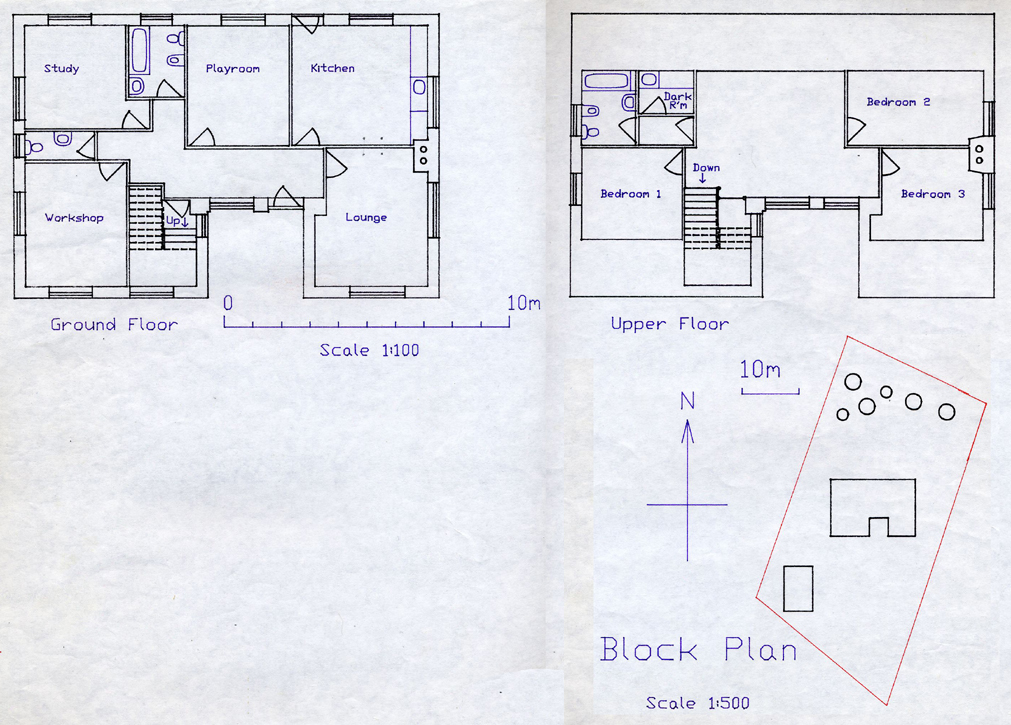

|
|
|
If you’re the kind of person who dismantles old equipment, to salvage parts or just for interest, you’ve probably noticed printed circuit boards (PCBs). Nowadays, they’re all designed on computer using standard software, but in the old days – up to the mid-1980s or even more recently than that – people designed them by hand on a drawing board. Many such people had their own little logos that they tucked away in quiet corners of the designs – mine was a little mouse. He developed over time, starting out as simply a circle for a face, with two attached circles for ears. Do look out for him!
The circuit diagram was another thing I drew. It’s the circuit of the small board at left and centre (solder side and component side respectively), and was just a small part of a much bigger circuit diagram. The little board sat in an aluminium can on a bigger board that carried the rest of the circuit. The little board was 1.33 inches x 2 inches.
The top two of the four little detail images are from that little board. The other two details are from completely different boards, done for a different client.
All late 1970s. All these boards were single sided – it was a matter of pride to minimize the number of wire links needed on the component side of the board; there are none on this small board. Modern boards are rarely single-sided, they usually have copper tracks on both sides, and they’re often many layers sandwiched together, with several layers of copper tracks (and/or a ground plane) hidden in the middle of the board. I did a few double-sided boards on the drawing board, but never three or more layers.
You could actually build this little video pre-amp from this deviation. I don’t think my client (I’m not saying which company it was) would mind, it’s a completely obsolete design. These days you’d get all that, and much more, on a single tiny integrated circuit – and capable of working at a far higher frequency into the bargain, which translates into far more pixels on the screen.
See also technical drawings at the bottom of Building the Attic and of Report: Pneumatic Transport System. I’m almost embarassed by the drawings in the report, they look so unprofessional to me. But they are of their time: other drawings in the UK Atomic Energy Authority drawing office looked very similar in style and execution in 1968. I actually built that attic, and the pneumatic transport system was altered, to my design, by others.
I designed this house in 1988, but never did build it, sadly:


The design would be slightly different if I was designing it today.
Back to Graphic Work